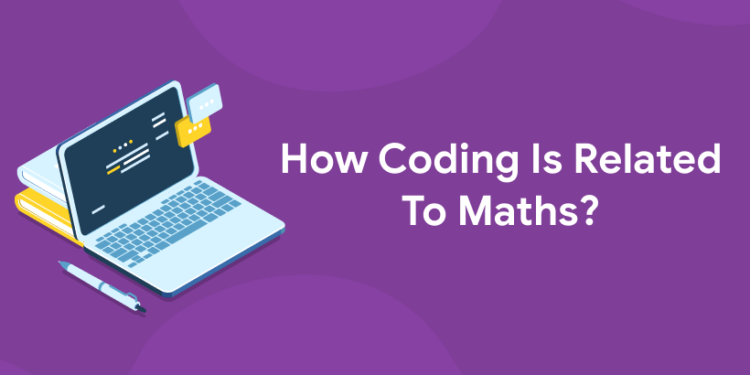Table of Contents
Coding can be hard to understand at first, but it’s really only one of the many mathematical disciplines out there. In fact, coding is just one way to use the principles of mathematics to solve problems. If you’re interested in learning more about coding and how it relates to mathematics, read on! We’ll discuss: What are the major differences between CODING and other mathematical disciplines? How does CODING fit into the big picture of math as a whole? Can CODING help make math more approachable?
To get the latest about on coding courses in the Entri app
PEMDAS
1: Which of the following data structures allows elements to be added and removed in a Last-In, First-Out (LIFO) order?
Back in grade school, your math teacher probably introduced you to PEMDAS. The mnemonic helps students keep track of which operation goes first when they multiply a parenthetical expression. And it’s just as important for programmers. Without proper application of PEMDAS (that’s parentheses first), your programs can quickly become scrambled and confusing. In coding terms, that means debugging time. For example: 2 + 3 * 4 – 1 * 2 / (3 – 1) . It should be evaluated from left-to-right as: (2 + 3) * 4 – 1 * 2 / (3 – 1) , not: 2 + 3 * 4 -1 * 2 / 3 -1 .
To know more about data science in the Entri app
Order Of Operations
In basic math, people use a standard set of rules to solve problems. If you don’t follow these rules, your answer will be incorrect. The order of operations looks like something like (something) and it goes from parenthesis, exponents (or powers), multiplication and division, and finally addition and subtraction. In code that works similarly: operators are evaluated in an ordered fashion; for example, if you were doing several multiplications inside parentheses: first multiplication happens first then addition or subtraction in between them (like a parenthesis), then addition or subtraction outside. Most languages have different levels which separate basic calculations from more complex ones.
- Can understand set of rules.
- Following an order in mathematics.
Get the latest updates on Machine learning in the Entri app
Logical Operators
While you might think of operators as tools for manipulating numbers, mathematicians see them as tools for defining relationships between sets. In programming, operators can be used in many of these same ways. To understand why it helps to look at some examples from everyday life: I have three apples, and you have five; which one of us has more? This statement involves several logical operators: and, or, and quantifiers such as at least. You might also see arithmetic functions like + or -, which are considered binary (two-argument) operations because they take two values and combine them into a single value. When a logical operator takes two arguments and returns one value (as opposed to returning no value), it’s called a Boolean function.
- For manipulating numbers
- Used by operators in several ways.
Get the latest updates on web development in the Entri app
Arrays
What Are They, and Why Should You Care? Arrays are a fundamental data structure in nearly every programming language. An array, as its name suggests, stores a collection of related data items in an organized way. For example, an array could store a list of numbers: [1, 2, 3]. In that case, each value in an array is called an element (in C#). Each element can be accessed by index: Element at index 0 would be 1. Element at index 1 would be 2. And so on. The elements can also be accessed by counting from zero: Elements at indexes 0 through 3 would hold values 1 through 4 respectively—elements are zero-indexed, or start counting from zero.
- Store a lot of data.
- It helps to sort out data.
To know more about android development in the Entri app
Reversi
It’s surprising just how many of today’s most popular video games rely on code that mimics mathematical equations. In one game, called Reversi, players compete to capture an entire board. The name of the game comes from a simple two-variable equation that produces reversible results, meaning a player could use X’s and O’s instead of their actual playing pieces and still win or lose depending on whether they make their opponent’s move—just like in algebra. Mathematicians first started experimenting with such processes when computers were first created, but it was later applied as a way for gamers to compete with each other using everyday technology.
To know more about digital marketing in the Entri app
Planning Ahead
If you’re trying to balance coding with your math studies, think of it as two separate skills that sometimes intersect. You don’t have to think about it too much in advance, but if you know there’s a math test coming up or a coding deadline, make sure you pace yourself and don’t overdo it on either end. Learning how to do both well takes practice and discipline—not just intelligence. Instead of focusing on one or the other, find ways they can help each other, like learning from an exercise designed for coding by thinking about how you’d translate its approach into problems related to mathematics.
- Helps to learn how to code.
- Increase concentration.
Enroll in the latest Java programming course in the Entri app
Calculating Exponents
You’ve likely encountered exponential expressions before in math class, whether in dealing with exponential growth or decay. Calculation of these terms becomes easier when you use exponents (usually indicated by a ^ symbol). There are three main types of exponents that you’ll encounter: positive, negative, and zero. If a number has a positive exponent (for example 10^2), then that number will be raised to itself—ten times. Whereas, if it has a negative exponent (for example 10^-2), then that same ten would be divided by itself—zero point one time. In addition, any term with an exponent of zero means that expression would be equal to one.
Get the latest updates on Python programming in the Entri app
Standard Deviation
Knowing how a data set can vary from its mean will help you predict what’s going to happen if there’s an outlier in your sample. For example, at one extreme, the stock could be up 50% or down 30% for a given year—that’s quite a large deviation from its average return of 10%. But at another extreme, it could be up only 1%, down 2%, and return 9% overall—which is closer to expectations. If you know that most stocks don’t deviate too much from their means and those that do tend to revert back pretty quickly, you’ll know where most likely expect stocks prices will go. This information can give investors some extra buying or selling power. If you are interested to learn the latest coding languages, the Entri app will help you to learn it easily. Entri app is following a structural study plan so that the students can learn everything easily. If you don’t have a coding background, it won’t be a problem. You can download the Entri app from the google play store and enroll in your favorite course.











